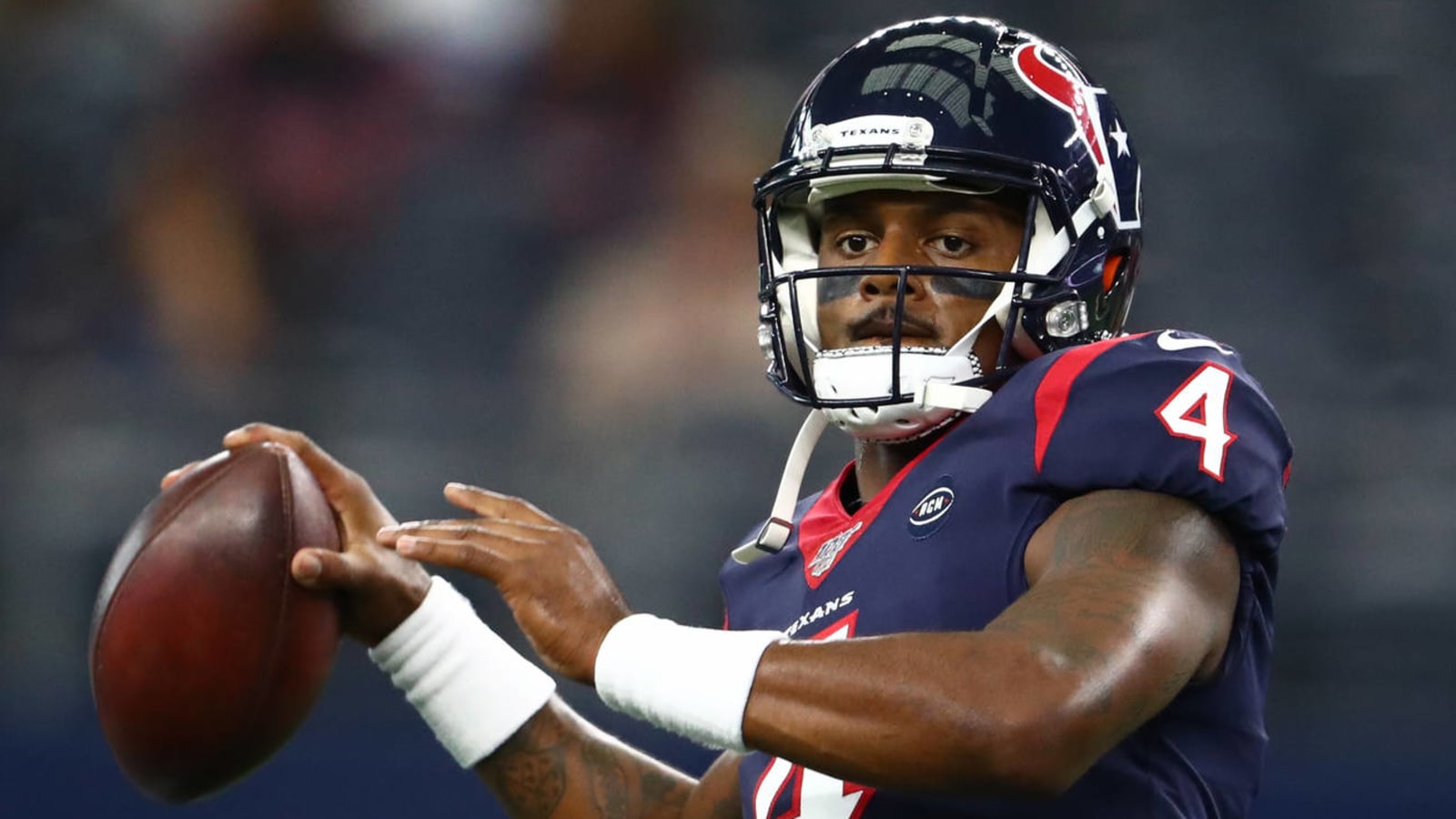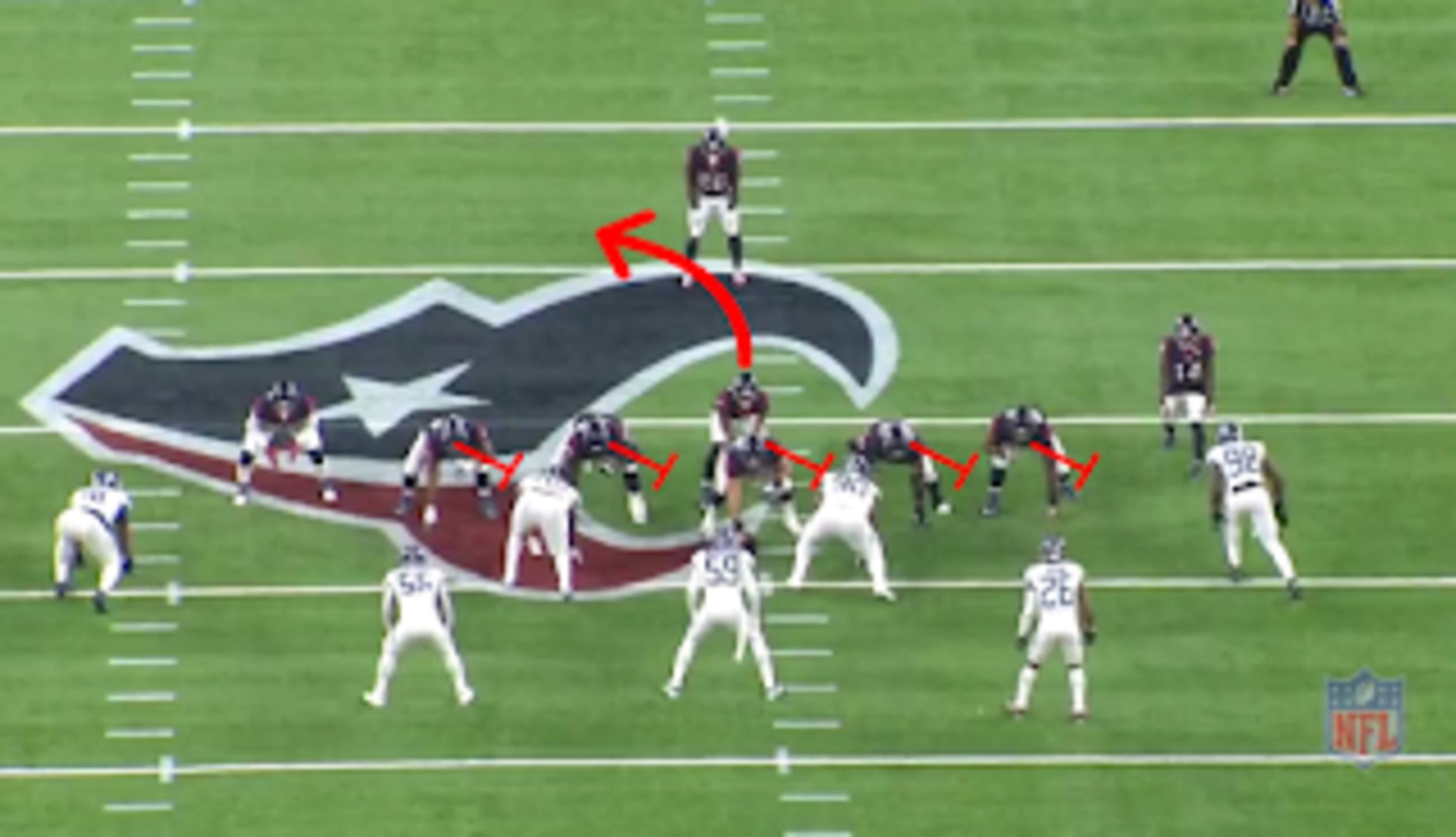
How Texans' Deshaun Watson can take his game to elite level
Until his 2017 rookie season was ended by an ACL injury after seven games, Houston's Deshaun Watson was playing at a high level (19 TDs, 1,699 yards passing).
In his second season, Watson bounced back from the injury, starting all 16 games and throwing for 4,165 yards, 26 touchdowns (and only nine interceptions) and rushing for five touchdowns. Houston won 11 games and claimed the AFC South title, but its offense was stifled in the playoffs by division rival Indianapolis.
QBs WITH BIG QUESTIONS
- Is Cowboys' Dak Prescott worth massive deal?
- Is Bucs' Jameis Winston a franchise QB?
- Can Titans' Marcus Mariota make leap to elite?
- How can Rams' Jared Goff join QB elites?
- Can Bears' Mitch Trubisky improve deep-ball game?
- How can Deshaun Watson become elite?
The Texans aim to prove that loss was a fluke, and that they are capable of going deep into the playoffs in 2019. Watson’s development will be a crucial part of that postseason push.
Let’s assess Watson’s greatest strengths and weaknesses.
STRENGTHS
Throwing on the move
Houston’s offensive line struggled mightily in pass protection last season. Watson was kept clean on only 55.3 percent of his dropbacks, the lowest rate in the league among the 30 quarterbacks to drop back at least 350 times.
Regardless of the horrid protection, Houston’s passing attack was still able to operate effectively, ranking 13th in passing DVOA (defense-adjusted value over average). That was thanks largely in part to Watson’s ability to mitigate pressure at an elite level.
In 2018, Watson posted a passer rating of 88.2 on pressured dropbacks, the best mark in the league among qualified quarterbacks. When under pressure, Watson completed 106 of 183 attempts (57.9 percent) for 1,443 yards, nine touchdowns and just five interceptions.
Watson is phenomenal at evading pressure and getting outside the pocket to extend plays. These traits allow receivers more time to separate from the defense, and Watson takes full advantage by throwing with tremendous accuracy while on the run. It’s this knack for improvisation that has allowed him to produce under pressure at such a high level.
One of the best examples of Watson’s improvisational ability leading to a big play was displayed in a Week 4 game last season against the Colts. The play below occurred in an extremely high-pressure scenario for Watson. The game was tied with less than a minute to go. The Texans had no timeouts. It was a must-win scenario for Houston, 0-3 at the time.
On 2nd and 6, Watson makes magic happen. Within the first couple of seconds following the snap, nobody is open in a viable area given the clock situation. The Colts only rush four, but Watson is quickly squeezed into a phone booth. Here, he shows off his signature skills. He finds a way to wiggle out of trouble, showing tremendous feel for the rush as he buys time with a rollout to his right. While sprinting toward the sideline, Watson throws a bullet to a wide-open DeAndre Hopkins for a 30-yard gain.
— Yardbarker All-22 (@22Yardbarker) August 24, 2019
Texans kicker Ka’imi Fairbairn missed a potential winning field goal attempt from 59 yards, but Houston won in overtime.
Tucking and running
Watson is one of the NFL's more athletic quarterbacks. At the 2017 Combine, he ran the 40 in 4.66 seconds, a time that ranks in the 83rd percentile among quarterbacks. He also registered a broad jump of 119 inches, good enough for the 89th percentile among signal-callers.
The Clemson product has used those gifts to become one of the league’s most prolific rushing quarterbacks. In 2018, Watson ran for 551 yards and five touchdowns, each number third highest among quarterbacks.
In addition to his skills as a passing threat on the move, Watson excels at rushing after escaping the pocket. Watson scrambled 65 times last season, gaining 481 yards on those attempts. That’s a superb average of 7.4 yards per scramble -– a number equal to the 2018 league average for yards per passing attempt.
On the following play, Watson scrambled for his longest rushing play of the season. Houston slides the protection to the left, while Watson is to fake the handoff and roll right.

Tennessee defensive tackle Jurrell Casey (#99) is all over it, as he easily evades Texans right tackle Kendall Lamm (#74) with a swim move. Once Watson turns around, Casey is already in his face. Watson dodges him with a sidestep, but the play is already dead, as Titans outside linebacker Derrick Morgan (#91) has shut down the rollout to the right side. Watson shows great awareness as he quickly realizes his best option is to scramble up the middle. He hits top speed in a hurry, and sprints to a 34-yard gain.
— Yardbarker All-22 (@22Yardbarker) August 24, 2019
WEAKNESSES
Taking too many sacks
In 2018, Watson was sacked 62 times, the highest total in the NFL. Worse, that mark tied Watson for the sixth-most sacks taken in a season. (The stat has been tracked regularly since 1981.) It was the most sacks taken in a season since Jon Kitna was sacked 63 times in 2006.
As noted, the Texans' offensive line was largely to blame for those sack numbers. However, Watson still took too many sacks that he easily could have avoided – a side effect of his highly mobile play style.
Watson took a sack on 21.7 percent of his pressured dropbacks last season, the seventh-highest rate in the league among qualifiers. He also took a league-high 15 sacks in the red zone -– six more than any other quarterback.
This is an example of a sack that Watson should not take. He does a nice job evading the initial pressure and escaping the pocket, but once he fails to find a viable target, he must get rid of this ball as quickly as possible to avoid the unnecessary contact and lost yardage.
— Yardbarker All-22 (@22Yardbarker) August 24, 2019
Quarterbacks can do more to protect themselves than anybody around them can. Crushing shots are inevitably going to come, but every quarterback can maximize his safety by doing their best to steer clear of as many avoidable hits as possible.
Deep passing
Watson is by no means a bad downfield passer, but he still has a lot of room to improve.
Last season, on throws travelling 20-plus yards downfield, Watson posted a passer rating of 86.9 (19th of 35 qualifiers), an adjusted completion percentage of 41.1 percent (20th), and six touchdown passes (tied for 16th). He threw five interceptions on 56 deep attempts in 2018, an interception percentage of 8.9 percent that ranked ninth worst among qualifiers.
He had similar issues in 2017, when he threw four interceptions on 40 deep attempts. His interception rate of 10 percent was tied for the fifth-worst mark in the league that season.
On the following play, Watson launches a 2nd-and-short deep shot on the New England side of the field. After he sees the free safety drop down and cover the crossing DeAndre Hopkins (who runs from the right to the left), Watson thinks he has wide receiver Vyncint Smith in a one-on-one matchup on the left side. However, Stephon Gilmore tracks down the ball from his deep zone on the other side of the field, and makes the interception.
— Yardbarker All-22 (@22Yardbarker) August 24, 2019
Deep interceptions are far from the worst problem a quarterback can struggle with. They are the “best” kind of turnover, as for the most part, they essentially serve as punts in terms of field position yardage.
However, great downfield bombers are able to minimize the turnovers and maximize the touchdowns on their deep shots. Watson is a solid deep passer, but to take that next step, he must cut down on the picks.
More must-reads:
- Texans waste prime opportunity to build around Deshaun Watson
- Bill O’Brien: Texans still ‘have a good situation’ at running back
- The 'AP First-Team All-Pro tight ends' quiz
Breaking News
Customize Your Newsletter
 +
+
Get the latest news and rumors, customized to your favorite sports and teams. Emailed daily. Always free!

